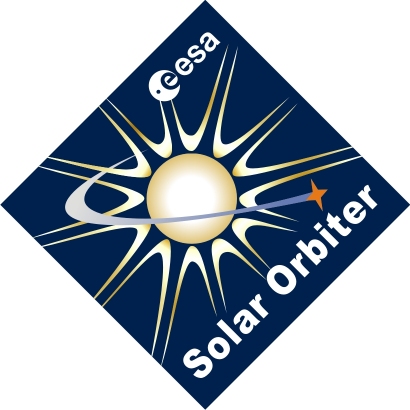
September 10 - 14, 2012 - Brugge, Belgium
Session 3 - part III
Eruptive processes in the solar atmosphere and their manifestations in the heliosphere
| Type: | Oral |
| Date: | Thursday, September 13, 2012 |
| Time: | 09:00 - 10:00 |
| Remarks: |
Coffee & Posters: 10:30-11:10 Lunch break: 12:10-14:00 |
| Seq | Time | Title | Abs No | ||||
| 1 | 09:00 |
Radial Dependence of Solar Energetic Particle Intensities
Lario, D.1; Aran, A.2; Decker, R.B.1; Ho, G.C.1 1JHU/APL, UNITED STATES; 2University of Barcelona, SPAIN For missions traveling close to the Sun, such as Solar Orbiter and Solar Probe Plus, it is essential to determine the energetic particle environment at heliocentric radial distances R<1 AU. Most of our knowledge about the heliospheric energetic particle environment comes from data collected near 1 AU over the last two or three solar cycles. In order to extrapolate energetic particle intensities measured at 1 AU to inner heliospheric distances we must rely on (i) the limited set of observations by the Helios and MESSENGER spacecraft at distances R<1 AU, and (ii) modeling efforts of solar energetic particle events that include the effects of both particle transport along and particle injection onto the interplanetary magnetic field lines. We will review the radial dependences obtained from both prior modeling efforts and inner heliospheric observations by Helios and MESSENGER, paying special attention to those events that depart from the expected theoretical dependences. |
|||||
| 2 | 09:20 |
Influence of the interplanetary shock on the heliocentric radial variations of gradual SEP events
Aran, A.1; Jacobs, C.2; Sanahuja, B.1; Lario, D.3; Poedts, S.2; Jiggens, P.T.A.4 1Dep. d'Astronomia i Meteorologia & Institut de Ciències del Cosmos. Universitat de Barcelona, SPAIN; 2Centrum voor Plasma-Astrofysica, K.U. Leuven, BELGIUM; 3Applied Physics Laboratory, The Johns Hopkins University, UNITED STATES; 4ESA/ESTEC, NETHERLANDS The inclusion of a travelling shock as a source of energetic particles during gradual solar energetic particle (SEP) events is a key element to assess the radiation encountered by a mission in the inner heliosphere. We have developed, in the frame of the Solar Energetic Particle Environment Model (SEPEM) project, a new two dimensional magnetohydrodynamic model to describe the shock propagation from 4 solar radii up to 1.6 AU. The outputs of this model are used to simulate the transport of SEPs from the shock front up to a given observer. The combination of the shock and particle transport models allows us to study the influence of both the shock properties and the observer’s magnetic connection on the radial and longitudinal variation of proton peak intensities and fluences in gradual SEP events. We have simulated the propagation of four shocks characterized by two different transit times to 1 AU and two angular widths (narrow and wide). Two sets of seven spacecraft are placed along two nominal interplanetary magnetic field lines at radial distances ranging from 0.2 AU to 1.6 AU. The two observers at 1 AU are located at central meridian and western positions with respect to the launch direction of the shocks. We calculate the resulting synthetic proton time-intensity profiles at several energies (5.0 < E < 200 MeV) measured by each virtual spacecraft. By tracking the shock from close to the Sun, we obtain the peak intensity of high energy particles at the prompt component of the SEP events, without assuming ad-hoc conditions for particle injection at the corona. We discuss how the resulting power-law dependences of the peak intensities (and fluences) on the observer's radial distance vary with the particle energy, the characteristics of the shock, and the different evolving conditions for particle injection at the cobpoint. This information may contribute to improve the understanding of the peak intensities and fluences that missions like Solar Orbiter will measure during SEP events. |
|||||
| 3 | 09:40 |
Observations of Solar Wind Coherent Structures During SEP Dropouts Events
Bruno, R.1; Trenchi, L.1; D'Amicis, R.1; Telloni, D.2; Marcucci, M.F.1 1INAF-IAPS, ITALY; 2INAF-OATO, ITALY Solar wind fluctuations are ubiquitous in interplanetary space and extend over several frequency decades. Among those fluctuations which have typical turbulence features it is possible to localize magnetic coherent structures at different scales throughout the inertial range. These structures mainly have an arc-shaped topology and, as previously reported in literature, are often found within time intervals characterized by Alfvénic fluctuations. Impulsive Solar Energetic Particles dropouts, i.e. simultaneous decreases of particle intensity at all energies, are often found to be associated with the crossing of these regions. Often, these magnetic structures indicate the border of adjacent regions charachterized by different values of plasma and magnetic field parameters supporting the idea which relates dropout events to solar wind regions possibly disconnected from flare site. However, the mechanism at the basis of SEP dropouts is not clear yet and different models in literature try to explain this phenomenon invoking also an active role of MHD turbulence. Solar Orbiter, with its remote sensing and in_situ packages, represents an ideal observatory to observe and solve this intriguing physical problem. |
|||||




